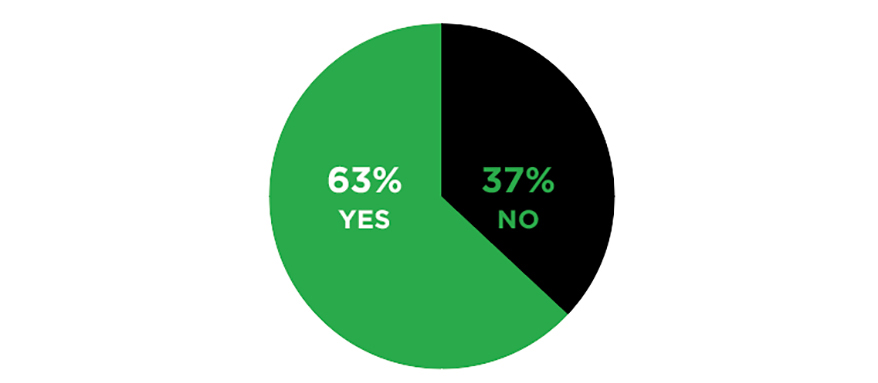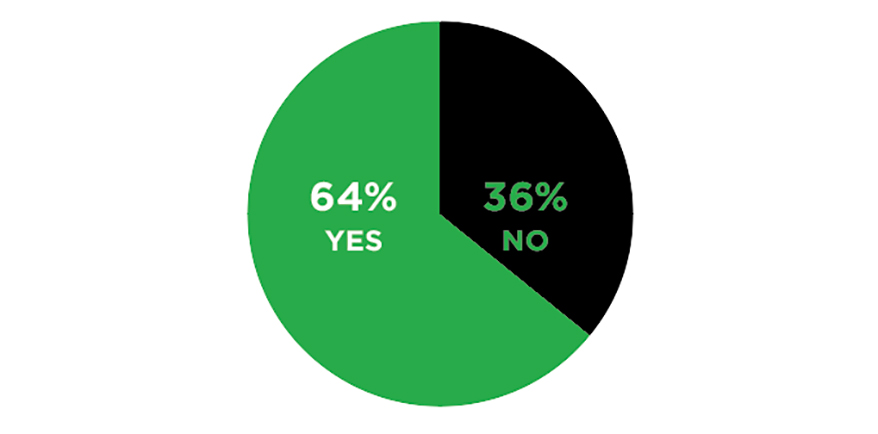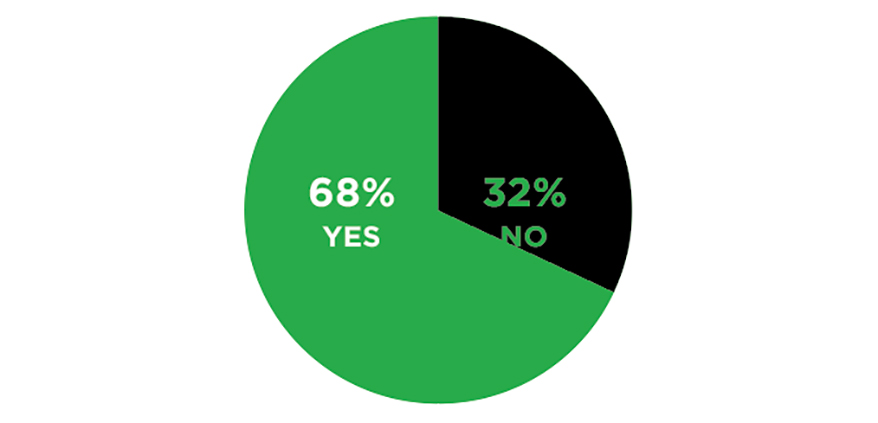
Trying Out New Markets
Analyze your top customers before defining your new segment.
Published
2 years agoon
IS YOUR SHOP READY to grow and expand into new markets? Hopefully the answer is yes, but before you jump off the cliff and dive in, let’s get the neurons in your brain firing. It’s time to creatively think about ways you can dip your toe into something new. Ready?
Who Do You
Serve Now?
For a lot of shops, the answer is “anybody who wants to place an order.” While that might be true if you’re starting out, the most successful companies know who their top customers are at any given moment. Do yourself a favor and take a minute and complete an 80/20 assessment for your shop.
This is an easy exercise where you analyze your top customers. Pull a report from any time. For this purpose, let’s say last year. Sort each customer by total sales revenue. If you add up the top 20 percent of your customers, they will be responsible for about 80 percent of your total revenue. This also means the bottom 80 percent of your customers only give you about 20 percent of your total revenue. This absolutely works.
It’s that top 20 percent of your customer base we’re interested in. What market segments could you sort them into? You’ll probably find there are one to three top markets you’re already targeting.
Why Is This
Important?
The market segmentation of your main customers directly reflects the type of work, frequency, and effort you currently have. This is critical information to use. If you’re looking to fill the gaps when you’re slower in your shop, you don’t want to target a new market or customer that would be more active when you’re already busy.
Ideally, for those peaks and valleys of work, the new customers would fill in the valleys. That way you have a steady stream of work coming into your shop at all times.
You’ll also want to factor in types of decoration, size of an average order, profit margin, and the frequency of customers placing orders, to name a few. When you drill down to it, this can show you what you do best.
Start Your New
Market Research
- Once you have a good idea of the foundation of your business, start noodling around with customers who may have similar needs. Here’s where the effort into some market research is going to pay off. Not sure what to consider? Here’s a handy checklist:
Why is a business plan important? Because it directs your company like a laser to the ideal customer.
- What are some adjacent markets to the ones you currently serve? For example, if you help the hospitality industry with their uniforms and gift shop merchandise, what about other markets like hospitals or small businesses?
- What type of customer lines up perfectly with what you do the best? Let’s say your production scheduling is top-notch and you never miss a ship date. What type of customers need that guarantee of on-time delivery the most?
- What are the newest trends in the industry? Maybe you’re already grinding that type of work on a daily basis? Who else might want that particular end result?
- Who are your main competitors going to be in the new market? Pay attention to what they’re doing on social media.
- What influences sales conversions with the new market idea? What are the biggest drivers for someone to say “yes”? (If it’s about low price, find another market!)
- Are there any unaddressed or underserved customer needs that would be a perfect fit for your company to step in and handle? Instant opportunity!
- Where are these potential customers physically and online?
- Do you have any contacts in this new business market that could help with your understanding of your potential customer’s challenges and needs? “I want to get your opinion on a new idea I had…” goes a long way in helping understand things before you go too far down the road.
- What would success look like for you in this new area for the first year? Think in terms of both the number of orders, total revenue, and total profit margin. What about five years from now?
- How are you going to be different than your competition that may already be established in this space? In other words, why would anyone want to spend money with you?

Define Your
New Target
A critical step before you jump in with both feet is to, as accurately as you can, define your new target market. You’ve completed the research. Now use it!
Write and construct a new business plan for your company to serve this new target market. Why is a business plan important? Because it directs your company like a laser to the ideal customer. It illustrates not only who could be your best customer, but also who to avoid.
You want to get the demographics and geographic information about your new target market defined. Focus on these areas and start building a sales plan:
- Geographic area: your city, county, state, or region of the country.
- Digitally defined area: on Facebook, in an online group, or using a search term.
- Some other attributes, like the total number of employees, their published yearly revenue, the total number of store locations, the number of years they’ve been in business, or any other deciding factor that makes sense.
If you need help sourcing this information, here’s a checklist:
- Local and state Chamber of Commerce membership
- County and City Census information
- Google. Yes. Mother Google knows all. Try typing in multiple keyword searches and see what comes up.
- International Trade Administration Research Center. Discover what drives the economic factors for the global economy.
- Economic Census. Published by the US Census Bureau. You can find sales figures, trends, and information that is updated every five years.
- County Business Patterns. Also published by the US Census Bureau, the information here is focused on businesses that have more than 50 employees.
- Trade Associations. Consider finding the trade associations for your target customer. There may be more than one and on different geographic levels.
- Ask a supplier. Companies and people who serve the industry you’re focused on could help steer you the right way.
- Join a Facebook or LinkedIn group for your area of interest. What challenges do they seem to always post about?

Key Questions
to Answer
Let’s say you’ve completed your research (you have, right?) and are chomping at the bit to get those new sales. The next step is to make a plan to reach out and start gaining customers in this new segment. Before you start working on your plan, there are a few questions that could be beneficial for you to answer. Yeah, I know… more things to think about.
- Is your new target market actually growing in sales currently? Many things are changing right now, and you don’t want to jump into serving a new market that is actually on the decline. Look at some trends. Are they hiring? Do you see social media posts that indicate they’re growing? See if there is evidence that they’re doing well.
- Analyze your competition. Often there may be a company that’s already serving the market. That’s ok. But what you need to understand is that in order for customers to jump on board with you, they have to fire their current provider. What do you have to offer that is going to persuade them to do that? What you want is something so irresistible that they will feel foolish for not doing it. Also, it absolutely cannot be about low price. Nobody wants to win that war.
- Can you set realistic sales goals? What do you envision for the first quarter or year of sales? With that goal in mind, what should the profit margin be on those sales? Also, when you are setting goals, you need to consider exactly how you’re going to obtain them. What are you willing to do to hit those goals? What do you need? Start making a checklist.
- What is it going to cost to enter the market? Will you need a new sales staff? A website? Research and development on a new product? Marketing? Make sure you develop a budget and the numbers make sense for what you want to do. The “Ready, Fire, Aim” method might have consequences you might not enjoy.
- What do you want or hope to learn? Often it takes a few tries to get something right. It’s 100 percent ok to test the market just to see the reaction and learn from what happens. Document your results and tweak the next iteration to see if a new direction might work a little better.
- What processes are in place now, or what processes will you need to build to have success?
Often, your preparation determines your outcome. For a new market, you might not have all the answers or methodology down with how you help your new customers. That’s ok. Can you chart what you need? - Define what you think success means. What’s a good number and what’s a bad number? Make sure you have a methodology in place to keep track. As you’re working through your efforts, document your progress and compare it to the results you want to achieve. Adjust accordingly.
New Markets to Consider
Promotional Products

Percentage of Brain Squad Members Who Offer Promo Products
Pro Tips:
- To enter this market, you should attend an ASI show or go to Printing United in Las Vegas. — Gavin StGeorges, Proud Tshirts, Miami
- Be careful about purchasing from the least expensive vendors. They normally do not service the accounts or take care of problems. — Jim Heiser, Bullseye Activewear, Brunswick, Ohio
- Always plan for it to take a little bit longer than advertised. If you have a hard deadline, make sure the supplier is fully aware of it. — Alison Banholzer, Wear Your Spirit Warehouse, Huntingtown, Maryland
- There’s one gigantic misconception about promotional products. People believe it’s easy to just “add” promotional products. Piece of cake. It’s not. You need to invest some serious time and attend tradeshows to learn the business. It can also be far more trouble than it’s worth if all you offer are small volume, cheap product orders, like 250 pen orders. Profit is very minimal, and it takes a lot of time. Plus, you need an artist available to handle the art side of every promotional products order. If you’re committed, it’s a solid decision. If you only hope to sell cheap stuff, it can be a nightmare. — Larry Mays, Mays Marketing Group, Erie, Pennsylvania
- Always shop your pricing. Always talk to the suppliers and get them to want to help you out. We entered the market by talking to other people who were selling promotional products and finding out how they got started. The biggest benefit we have found is the ability to fill in the slow seasons of the apparel business. It also gets us access to a different type of client. — Shaun McCarthy, GL Imprinting, Syracuse, New York
- Learn the new terminology, pricing structure, different process for every vendor, and what products to offer that are good quality. It’s a huge learning curve. — Jeremy Picker, AMB3R Creative, Denver
Head to page 42 to learn how you can increase profits with promotional products.

Interior dÉcor

Percentage of Brain Squad Members Who Offer Interior Décor
Pro Tips:
- We used to make lampshades, where the screen printed fabric was a simple length of cotton wrapped around a lampshade frame. These items had a large mark up and looked great in our retail shop. We also tried cushions however they are really labor intensive and difficult to store and merchandise. Lampshades are simple to print and can be made into a large range of sizes with a lampshade making kits. They would be my preferred product to produce for the home décor market. — Chessie Rosier-Parker, Squeegee and Ink, Newbury Berkshire
- We screen print on wood mostly. There’s a little learning curve. In my opinion, there are two ways to do it. One, working directly with clients on custom work, which is really rough because “I don’t know what I want, but I like it when I see it” is really difficult in this space. The other, better way is to just produce pieces, and let them find the market. — Eric Carnell, Independence Printage Corp, Bellevue, Washington
- We screen print interiors for British Airways: meal tables and arm rests. We were located near an aerospace company and they needed a hand printer familiar with two part epoxy ink. The aerospace industry pays very, very well and kept us going during the pandemic. — John Wilhelmsen, Distinct Impression, Tucson, Arizona
Sportswear/ Athleisure

Percentage of Brain Squad Members Who Offer Sportswear/Athleisure
Pro Tips:
- The cheapest material cost is not the best material for an easy printing experience. Cheap materials present their own set of post-production dye-sublimation problems. — Bill Bischoff, Design/Atomic Tees, Modesto, California
- Be careful on temperatures when printing and pay attention to backing when embroidering. Most of these items need extra attention to turn out great. — Jim Heiser
- You have to do a lot of testing on new products before you can actually print a new order. There are always challenges because the manufacturers bring out new products and do not ever test them for decoration and I believe they don’t really care if you can decorate it or not. — Al Messier, Team Print, Bourbonnais, Illinois
- You must consider what the reality will be when you have to hire someone to handle the “team business.” Can they be trusted to get it all right? Will you have enough time? How much profit can be earned relative to the dramatically increased cost of labor, if you can find someone to hire. — Larry Mays
Learn Family Industries’ recommended print methods for athleticwear here.
AdvertisementWant more from The Marshall Plan? Read all of Marshall Atkinson’s columns at screenprintingmag.com/themarshallplan.
Marshall Atkinson is the owner of Atkinson Consulting, LLC, based in Mesa, Arizona. He coaches apparel decoration companies on operational efficiency, continuous improvement, workflow strategy, business planning, employee motivation, management, and sustainability. He is a frequent tradeshow speaker, author, and host of two podcasts, as well as co-founder of the Shirt Lab educational company. He can be reached at marshall@marshallatkinson.com

SPONSORED VIDEO
Let’s Talk About It
Creating a More Diverse and Inclusive Screen Printing Industry
LET’S TALK About It: Part 3 discusses how four screen printers have employed people with disabilities, why you should consider doing the same, the resources that are available, and more. Watch the live webinar, held August 16, moderated by Adrienne Palmer, editor-in-chief, Screen Printing magazine, with panelists Ali Banholzer, Amber Massey, Ryan Moor, and Jed Seifert. The multi-part series is hosted exclusively by ROQ.US and U.N.I.T.E Together. Let’s Talk About It: Part 1 focused on Black, female screen printers and can be watched here; Part 2 focused on the LGBTQ+ community and can be watched here.
You may like
Advertisement

Inkcups Announces New CEO and Leadership Restructure

Hope Harbor to Receive Donation from BlueCotton’s 2024 Mary Ruth King Award Recipient

Livin’ the High Life
Advertisement
Subscribe

Bulletins
Get the most important news and business ideas from Screen Printing magazine's news bulletin.
Advertisement
Most Popular
-

 Art, Ad, or Alchemy1 month ago
Art, Ad, or Alchemy1 month agoF&I Printing Is Everywhere!
-

 Case Studies1 month ago
Case Studies1 month agoHigh-Density Inks Help Specialty Printing Take Center Stage
-

 Andy MacDougall1 month ago
Andy MacDougall1 month agoFunctional and Industrial Printing is EVERYWHERE!
-

 Columns2 weeks ago
Columns2 weeks ago8 Marketing Mistakes Not to Make When Promoting Your Screen Printing Services Online
-

 Editor's Note2 weeks ago
Editor's Note2 weeks agoLivin’ the High Life
-

 Thomas Trimingham2 months ago
Thomas Trimingham2 months ago“Magic” Marketing for Screen Printing Shops
-

 Marshall Atkinson2 weeks ago
Marshall Atkinson2 weeks agoHow to Create a Winning Culture in Your Screen-Printing Business
-

 News & Trends1 month ago
News & Trends1 month agoWhat Are ZALPHAS and How Can You Serve Them in Your Print Business?










